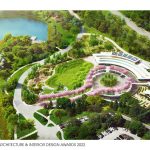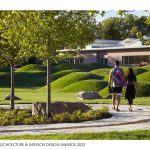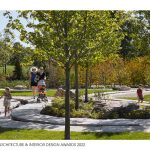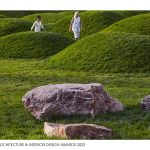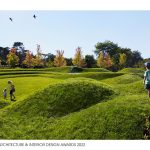Diversity, discovery, and imagination are emphasized in the vision of this design, offering visitors fertile ground for the expansion of the mind and body. The conception of the Regenstein Learning Campus emerged from a shared concern about the increasingly distant relationship of children to nature as they are further plugged into the digital world. As an educational landscape, the garden has many engaging elements that naturally bridge the transition between play and intuitive experiential learning. Sculptural landforms define the character of the central space and have the opportunity to play and discover in active ways.
Global Design & Architecture Design Awards 2022
First Award | Public Landscape (Built)
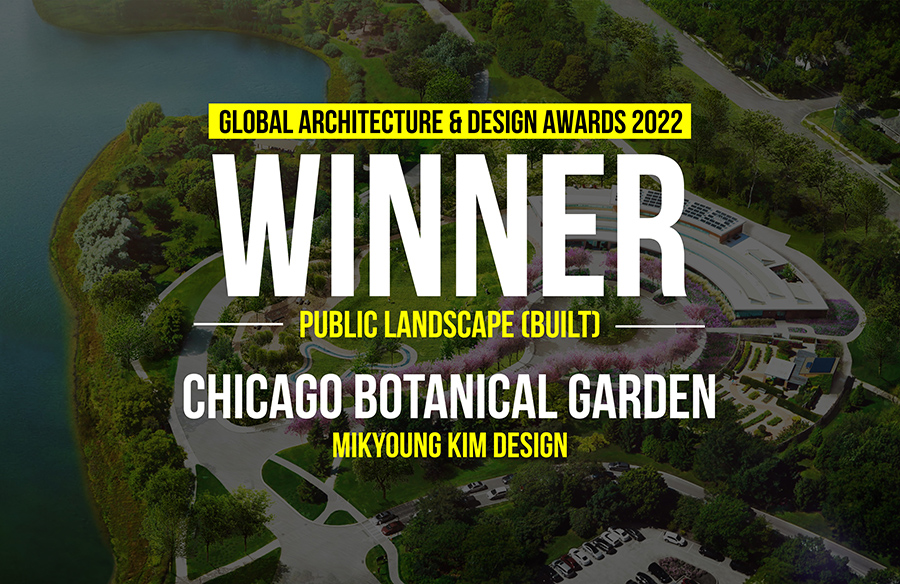
| Project Details | |
| Project Name: | Chicago Botanical Garden |
| Project Category: | Public Landscapes |
| Studio Name: | Mkyoung Kim Design |
| Design Team: | Landscape Architect: Mikyoung Kim Design |
| Local Landscape Architect: Jacobs Ryan Assoc. | |
| Architect: Booth Hansen | |
| Area: | United States of America |
| Year: | 2016 |
| Location: | Chicago, Illinois |
| Photography Credits: | Kate Joyce |

©Kate Joyce
The active elements in the garden include a willow tunnel, an arborvitae contemplative room, a hornbeam council ring, hollowed out climbable logs, an apiary, butterfly garden, and an outdoor classroom. The garden’s outdoor classrooms create opportunity for nature education and ecological stewardship. Programming includes educational classes on botany, the culinary arts, garden design, horticulture, photography, bird watching, camping, and wellness.
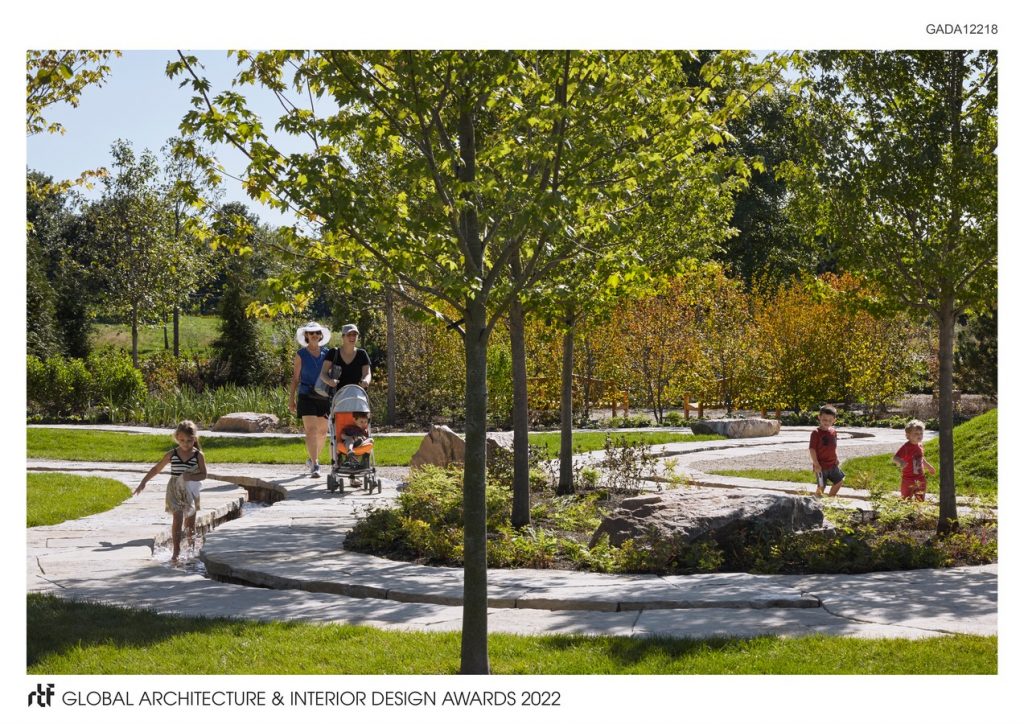
©Kate Joyce
Sustainability drove the sourcing of local and regional materials for the play runnel, providing a cooling oasis during the summer months. Regionally sourced boulders offer moments of discovery throughout the landscape. A central boulder fountain within the runnel offers children of all abilities to engage the water. Reclaimed logs were carved to create moments of play for children to crawl and hide and seek. Rain gardens provide additional opportunities for discovery and learning while addressing important stormwater management issues.
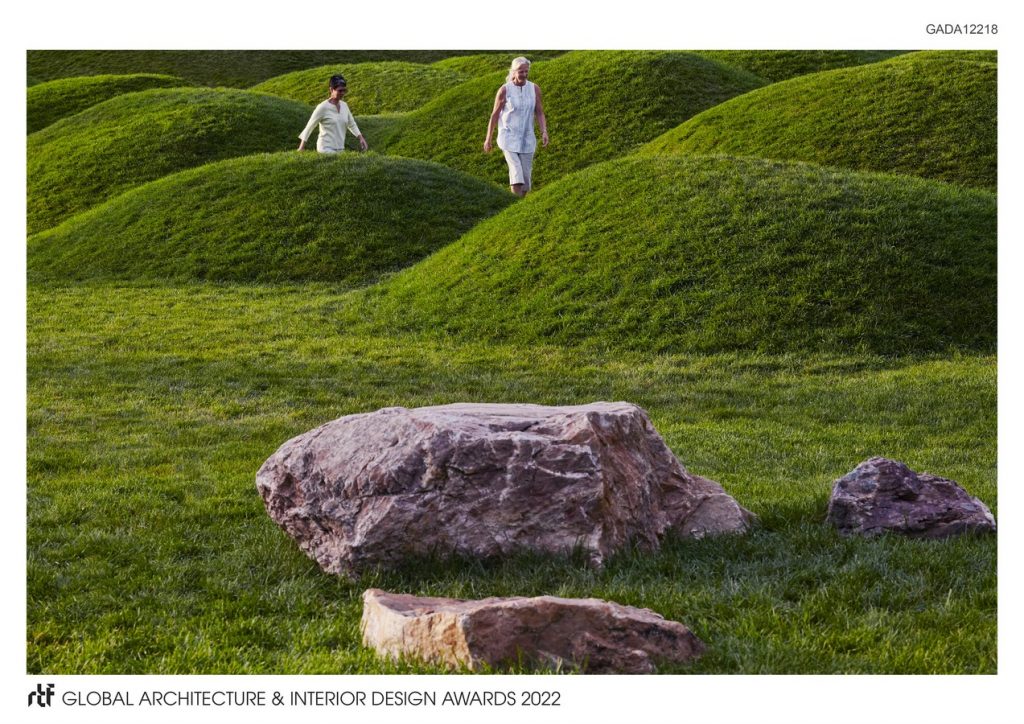
©Kate Joyce
The campus links to two previously existing amenities to create a larger learning environment: The Grunsfeld Growing Garden, an herb and culinary garden, to the Northeast; and the Kleinman Family Cove, an aquatic learning center for families and children, to the West. Together these three distinct learning environments now read as one experience providing a rich and highly programmed learning center for the Chicago Botanic Garden; one that is as much about touching, smelling and feeling as it is about visual beauty.
- ©Kate Joyce
- ©Kate Joyce
- ©Kate Joyce
